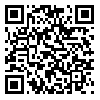Fri, Oct 17, 2025
[Archive]
Volume 37, Issue 1 (2-2023)
Med J Islam Repub Iran 2023 |
Back to browse issues page
Download citation:
BibTeX | RIS | EndNote | Medlars | ProCite | Reference Manager | RefWorks
Send citation to:



BibTeX | RIS | EndNote | Medlars | ProCite | Reference Manager | RefWorks
Send citation to:
Moradi Y, Moradkhani A, Pourazizi M, Rezaei L, Azami M. Diagnostic Accuracy of Imaging Devices in Glaucoma: An Updated Meta-Analysis. Med J Islam Repub Iran 2023; 37 (1) :302-318
URL: http://mjiri.iums.ac.ir/article-1-8257-en.html
URL: http://mjiri.iums.ac.ir/article-1-8257-en.html
Student Research Committee, Kurdistan University of Medical Sciences Sanandaj, Iran , mobin.azami@muk.ac.ir
Abstract: (1781 Views)
Background: Different devices have diverse accuracy in diagnosing glaucoma, and therefore choosing the best device is challenging. Thereby, this study was conducted to evaluate the diagnostic sensitivity and specificity of imaging devices in glaucoma and explore the need for an updated meta-analysis on this issue.
Methods: In this systematic review and meta-analysis, PubMed, Scopus, and Web of Science databases were searched for articles published between January 2004 and 2022. Cross-sectional or diagnostic studies were selected, and sensitivity, specificity, positive predictive value, and negative predictive value were measured.
Results: A total of 28 cross-sectional studies were included for meta-analysis. Devices were divided into 2 groups, based on the optic nerve area and the macular area. For the nerve area, the pooled sensitivity was 77% (CI 95%, 70-83; I2, 90.01%) and the pooled specificity was 89% (CI 95%, 84-92, I2, 93.22%), and for the macular area, the pooled sensitivity was 87% (CI 95%, 80-92, I2, 91.79%), and the pooled specificity was 90% (CI 95%, 84-94; I2, 86.30%). We analyzed each device separately. For optical coherence tomography(OCT), the pooled sensitivity was 85% (CI 95%, 81-89; I2, 87.82%) and the pooled specificity was 89% (CI 95%, 85-92; I2, 84.39%); for Heidelberg retinal tomography (HRT), the pooled sensitivity was 72% (CI 95%, 57-83; I2, 88.94%) and the pooled specificity was 79% (CI 95%, 62-90; I2, 98.61%), and for optical coherence tomography angiography (OCTA), the pooled sensitivity was 82% (CI 95%, 66-91; I2, 93.71%) and the pooled specificity was 93% (CI 95%, 87-96; I2, 64.72%).
Conclusion: The macular area was more sensitive and specific than the optic nerve head. Furthermore, OCT had higher sensitivity, and OCTA had higher specificity when compared with other imaging devices.
Methods: In this systematic review and meta-analysis, PubMed, Scopus, and Web of Science databases were searched for articles published between January 2004 and 2022. Cross-sectional or diagnostic studies were selected, and sensitivity, specificity, positive predictive value, and negative predictive value were measured.
Results: A total of 28 cross-sectional studies were included for meta-analysis. Devices were divided into 2 groups, based on the optic nerve area and the macular area. For the nerve area, the pooled sensitivity was 77% (CI 95%, 70-83; I2, 90.01%) and the pooled specificity was 89% (CI 95%, 84-92, I2, 93.22%), and for the macular area, the pooled sensitivity was 87% (CI 95%, 80-92, I2, 91.79%), and the pooled specificity was 90% (CI 95%, 84-94; I2, 86.30%). We analyzed each device separately. For optical coherence tomography(OCT), the pooled sensitivity was 85% (CI 95%, 81-89; I2, 87.82%) and the pooled specificity was 89% (CI 95%, 85-92; I2, 84.39%); for Heidelberg retinal tomography (HRT), the pooled sensitivity was 72% (CI 95%, 57-83; I2, 88.94%) and the pooled specificity was 79% (CI 95%, 62-90; I2, 98.61%), and for optical coherence tomography angiography (OCTA), the pooled sensitivity was 82% (CI 95%, 66-91; I2, 93.71%) and the pooled specificity was 93% (CI 95%, 87-96; I2, 64.72%).
Conclusion: The macular area was more sensitive and specific than the optic nerve head. Furthermore, OCT had higher sensitivity, and OCTA had higher specificity when compared with other imaging devices.
Keywords: Diagnostic Imaging, Glaucoma, Heidelberg Retinal Tomography, Meta-analysis, Optical Coherence Tomography, Optical Coherence Tomography Angiography, Systematic Review
Type of Study: Meta-analysis Article |
Subject:
Ophthalmology
Send email to the article author
| Rights and permissions | |
 |
This work is licensed under a Creative Commons Attribution-NonCommercial 4.0 International License. |








